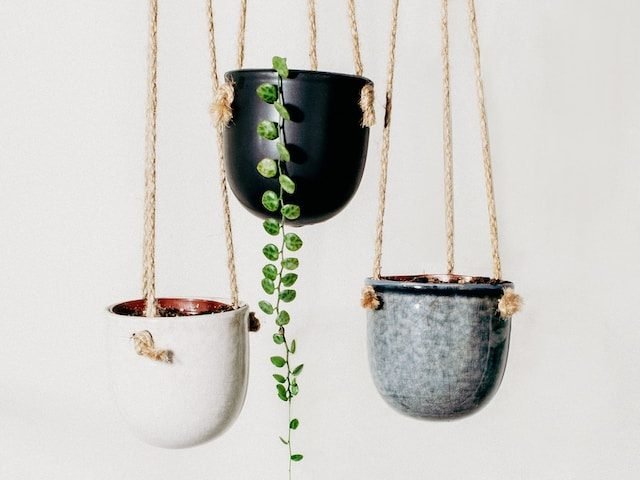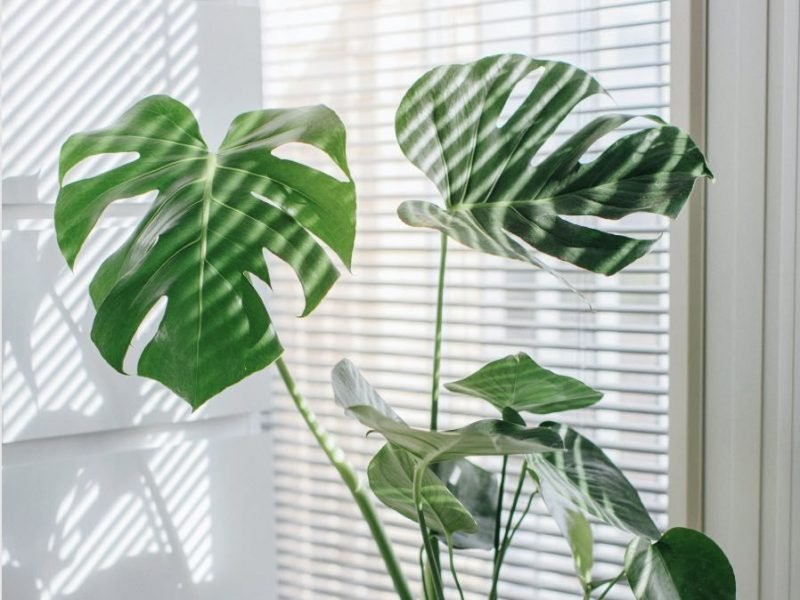
Minimalist Interior with Houseplants
You may not think it’s possible to have a minimalist home with loads of houseplants, but if you choose the right ones and style them right, it can be pretty satisfying. Instead of having lots of crazy untamed plants dotted around your home, choosing one large statement plant or a few smaller plants grouped on shelves will help fit in with your minimalist interior style.
We have chosen some of the sleekest houseplants to make a real statement in your home, whilst not pulling the calmness away from your minimalist home.
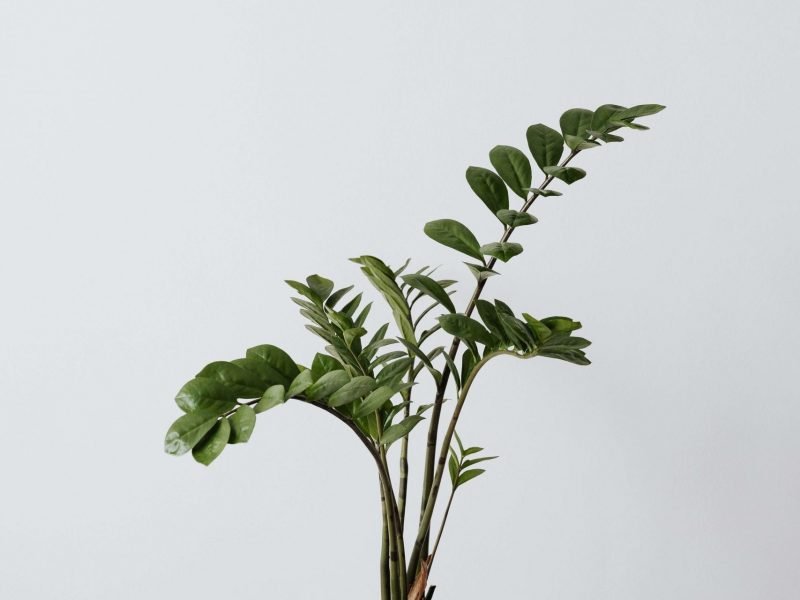
ZZ Plant
Zamioculcas zamiifolia
Also known as the Zanzibar Gem, the ZZ Plant is a great low-maintenance minimalist houseplant. Loved for their dark green glossy oval leaves, we recommend this one for those without a fantastic track record of keeping plants alive, but also for anyone looking for something smart and stylish to spruce up their home. They are very adaptable and will deal well with some bright but indirect light, as well as shady dark corners of your home.
The ZZ Plant is quite slow-growing so you won’t see new stems popping out all of the time. It’s important to note that they grow bulb-like roots called rhizomes so will need quite a large pot to really thrive and grow. This also means they are drought tolerant as they store water in their rhizomes.
Find out more in our ZZ Plant care guide.
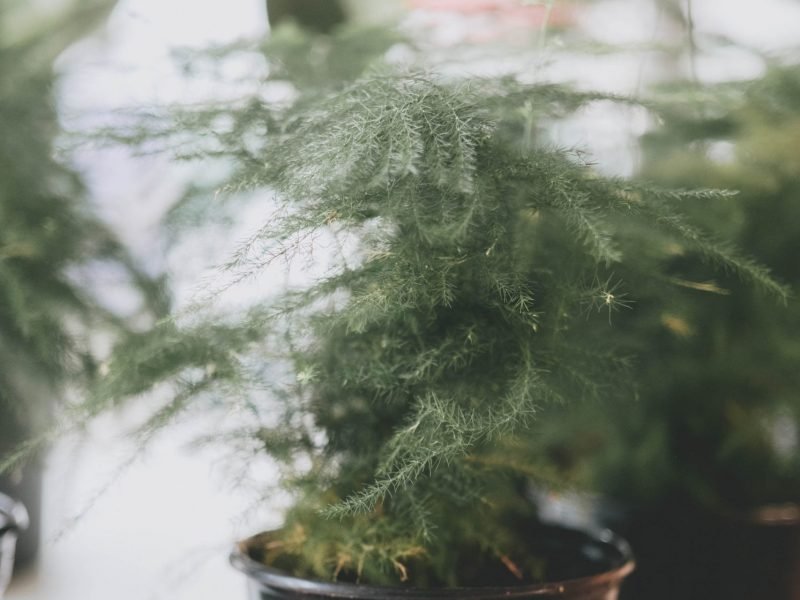
Asparagus Fern
Asparagus Setaceus
The Asparagus Fern is such an elegant little houseplant – and although they look like they’ll be hard work to keep happy, they’re actually pretty simple to care for. Given the right conditions, they can grow extremely quickly and you’ll find new stems popping up every week.
They aren’t too fussy on light conditions or watering schedules, but humidity is a must for them. Make sure to give them a spray with a mist bottle every 3-5 days or place near a humidifier to keep them happy in the long term. The leaves and stems will yellow if they aren’t happy, if that happens to you then just give your Asparagus Fern another spray down and a little extra water.
Find out more in our Asparagus Fern care guide.

Kentia Palm
Howea forsteriana
Kentia Palms are pretty hardy plants that can stand environments that many other houseplants wouldn’t be able to, making them quite easy to care for. They can grow up to 40 feet outdoors but will rarely get over 13 feet when kept indoors.
They can be quite fussy about watering however and prefer to get little and often as this stops their soil from drying out completely or being soggy for longer periods of time. They also aren’t great with having dusty leaves, so we recommend wiping them down with a damp cloth every now and then to keep them clean.
The good news is that they are completely safe and non-toxic, so perfect for homes with pets or kids!
Find out more in our Kentia Palm care guide.

Bird of Paradise
Strelitzia Reginae
If you’re dreaming of a tropical getaway, then a Bird of Paradise is the next best thing. Native to South Africa, they are loved for their incredible orange and blue leaves that resemble birds (which explains the name). It’s really important that you keep your pets away from the flowers and leaves as they can be very toxic if ingested so we don’t really recommend this one to pet parents, unfortunately.
It’s also important that you have a lot of space when buying a Bird of Paradise plant as they do grow up to about 2 metres in size. But if you have the space for it, then they are the perfect plant for those looking for something a little more exotic.
Find out more in our Bird of Paradise care guide.

Dragon Tree
Dracaena draco
The Dragon Tree was actually our first ever houseplant and ignited our initial love for caring for indoor plants many years ago. Native to Madagascar, it’s a timeless plant that brings elegance and style to every room. They are also super easy to care for and are great at purifying the air which makes them the perfect entry-level houseplant.
You’ll have a hard time trying to kill a Dragon Tree as they are pretty drought-tolerant and forgiving when it comes to light, temperature levels and humidity so it’ll adapt well to every spot in your home.
Although they can reach up to 6 metres in their natural outdoor habitat, they’ll only ever get to about 1.5/2 metres when grown indoors (and even this will take years and years) so you don’t need to worry about it getting too big to handle.
Find out more in our Dragon Tree care guide.

African Mask Plant
Alocasia amazonica
If there is one plant that has risen up the popularity ranks recently, it’s the African Mask Plant! You can now buy these at basically every plant shop, market and superstore globally as they are definitely the most popular of the Alocasia family. And we totally understand why they have become so popular, their intense glossy shield-like leaves are adorned with strong white veins which really make them something special.
They aren’t a great plant for beginners, however, as they do require decent light levels, as well as warm temperatures and a consistent high humidity level. Misting this plant is really crucial or it’ll start to develop some issues.
If in the right environment, your African Mask Plant can grow well above 1 metre but this will take many years as they don’t produce that many new leaves each year. This is why it’s crucial you take good care of the leaves your plant does have by regularly dusting and inspecting for issues.
Find out more in our African Mask Plant care guide.
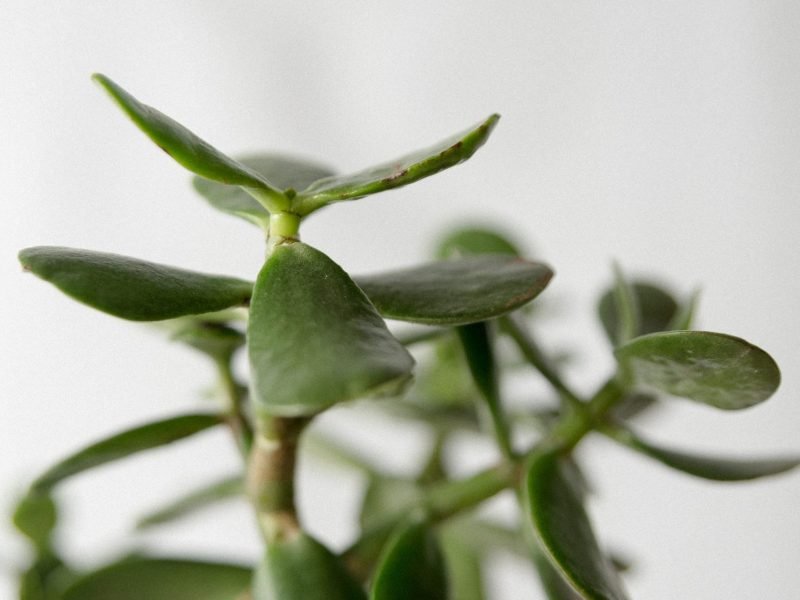
Jade Plant
Crassula ovata
Believed to bring luck, Jade Plants are one of the most popular succulent varieties. They are best known for their oval-shaped leaves and strong stems which become quite woody as they mature.
When it comes to caring for your Jade Plants, the top two things to remember is to give it a spot that gets ample sunshine throughout the day as well as making sure the potting mix has fully dried out before watering again as they are susceptible to root rot if you’re not careful. Jade Plants are quite slow growers though, so even if the environment and care routine are perfect, they may only grow a few inches per year.
Find out more in our Jade Plant care guide.
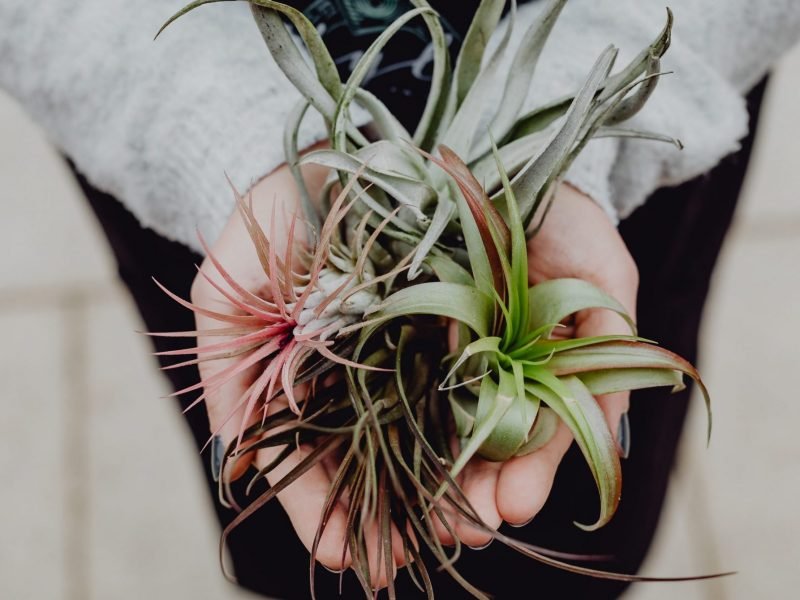
Air Plant
Tillandsia
There are hundreds of Air Plant varieties for you to fall in love with, all with relatively similar care requirements. If you haven’t already guessed from the name, Air Plants are pretty different to most other houseplant types as they don’t grow in soil. Instead, all they need is regular misting and the occasional bath to survive!
Native to areas across Central and South America, Air Plants need warm temperatures and high humidity levels to really thrive which makes them great plants for terrariums. But don’t think this is the only way to grow Air Plants, because with a little bit of care and attention to their environment, you can grow them in most homes with no problems!
Find out more in our Air Plant care guide.
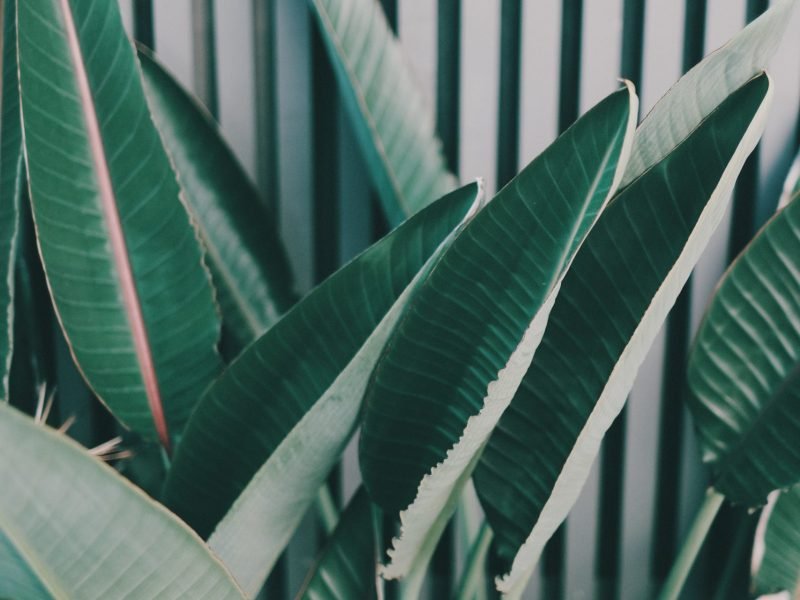
Cast Iron Plant
Aspidistra elatior
The Cast Iron Plant is a fantastic, glossy houseplant that gives a real tropical feel to your space. On top of all of this, they’re also pretty simple to care for and can take a good variety of conditions without issues. This hardiness is where they got their name from, because they are just that tough.
Cast Iron Plants are perfect for areas that don’t have quite as much light, and will happily continue to grow in a shady spot. If you provide a little extra humidity, using something like a spray bottle or humidifier, you can expect your Cast Iron Plant to really thrive.
We definitely recommend these as a starter or beginner houseplant due to their ease of maintenance, but don’t be disheartened by the fact that they do grow quite slowly.
Find out more in our Cast Iron Plant care guide.
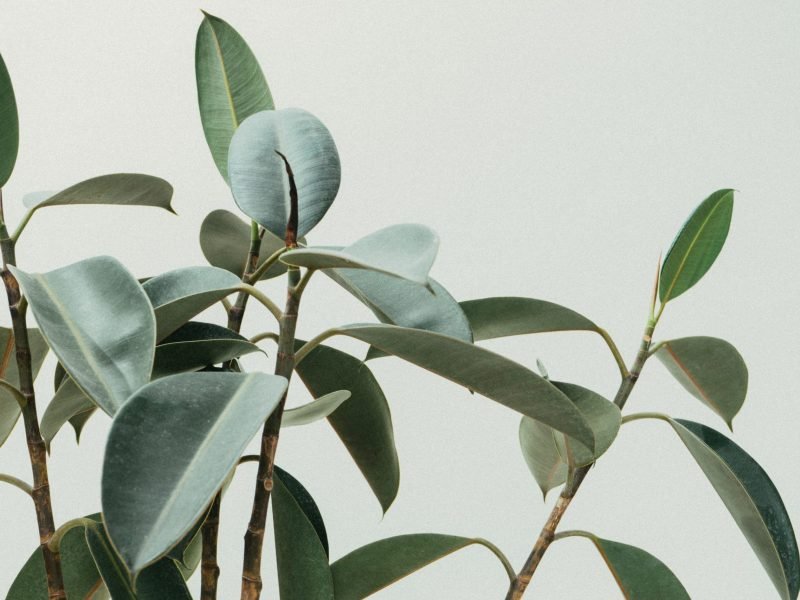
Rubber Plant
Ficus elastica
The name Rubber Plant comes from the latex in the leaves, which was once used to actually make rubber! They are a great plant to bring a little bit of that rainforest feel right into your home. And whilst they can reach about 30 metres in their native environment, when potted in your home they’ll be much smaller don’t worry!
Caring for your Rubber Plant doesn’t have to be difficult. Good light levels and not too much water are the basics to remember. As they are native to Southern Asia, they love humidity and will really struggle with dry air so regularly misting will keep your plant happy and healthy.
Find out more in our Rubber Plant care guide.
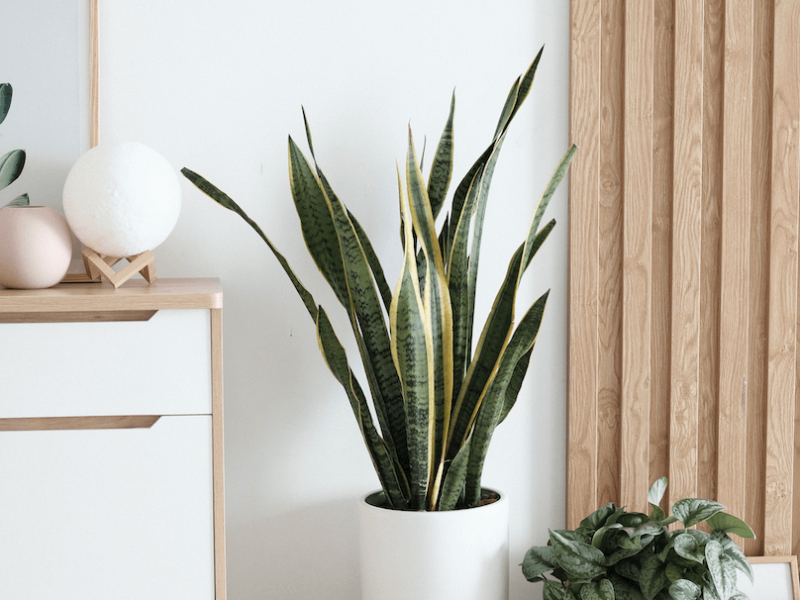
Snake Plant
Sansevieria Trifasciata
The bold and striking leaves of the Snake Plant make it stand out wherever you put it! Not only are they slow-growing, but they transcend upwards so are great for small spaces or that corner you never know what to do with. They have some of the sturdiest leaves or any houseplant, and their sharp leaf tips have given the plant the nickname of mother-in-laws-tongue!
When it comes to care, Snake Plant are super easy to look after, they can adapt to a range of light levels (are great low light plants), prefer dry soil and don’t need much attention in the way of misting or repotting etc. So if you want a low maintenance, sturdy houseplant, then the Snake Plant is your perfect match!
Find out more in our Snake Plant care guide.
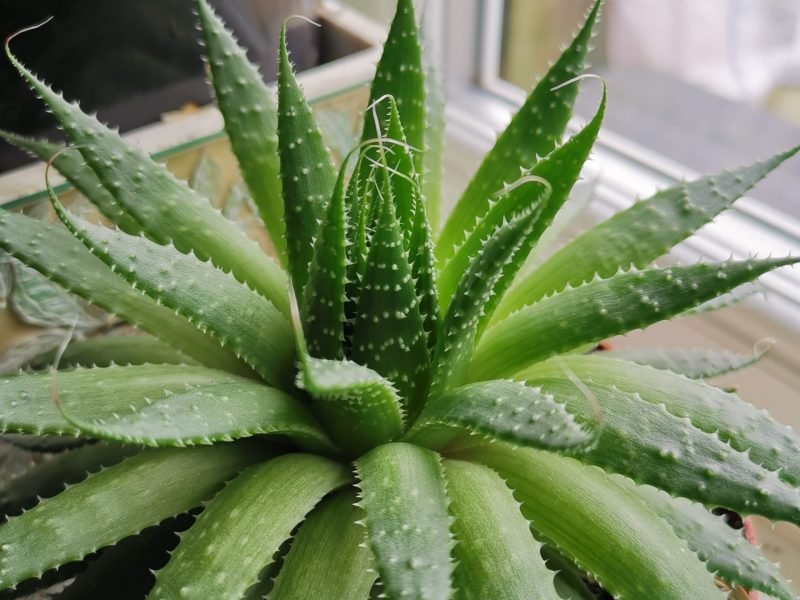
Aloe Vera
Aloe Barbadensis Miller
Although Aloe Vera plants are commonly loved for their gel, they are much more than just their health and beauty benefits, as they make for a super minimalist and forgiving houseplant! Like most other succulents, Aloe Vera plants don’t need much tending to as they thrive in dry coarse potting mix. But it is important that they get a good amount of bright light or will become quite straggly.
As they mature a little, you’ll see lots of little Aloe pups popping up which can be very easily removed from the mother plant and propagated! Aloe plants are super affordable and you can pick them up basically anywhere that sells plants, even supermarkets will often sell them in the summer months.
Find out more in our Aloe Vera care guide.

Swiss Cheese Plant
Monstera deliciosa
Native to the rainforests of Central America, the Monstera Deliciosa has very quickly become the most fashionable and photographed houseplant ever. And it’s not difficult to understand why… If their large dark green glossy heart-shaped leaves weren’t enough, their unique splits surely will be!
You might be surprised to learn that the Monstera isn’t actually a fussy plant and is pretty easy to take care of. Bright but indirect light, moderate amounts of water and regularly misting are really the main things to remember.
You’ll find that a lot of more mature Monstera plants are sold with a moss pole as they are climbing plants. In the rainforest, the ariel roots that pop out from the stems will attach themselves to other plants as the plant matures. So a moss pole is a good substitution to help your plant grow and mature.
Find out more in our Swiss Cheese Plant care guide.
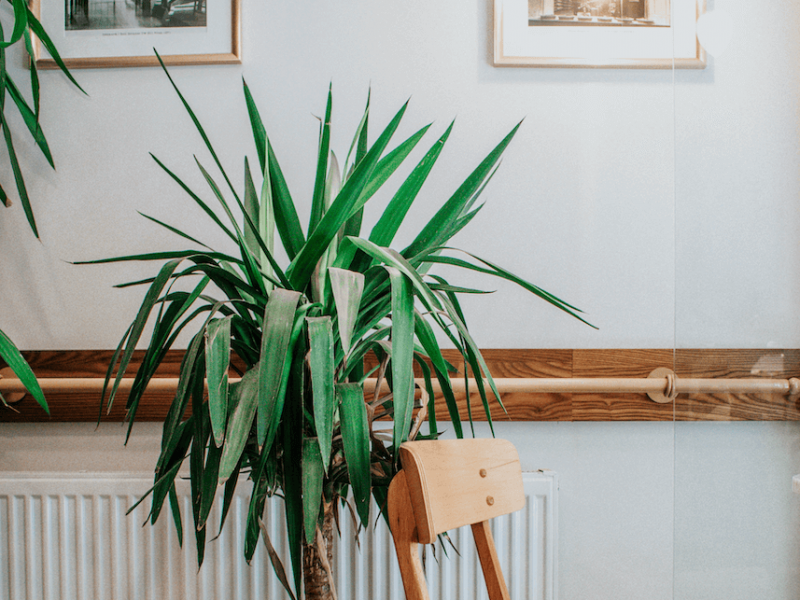
Yucca
Yucca elephantipes
A staple of many homes, the Yucca is one of the most popular houseplants and you’ll often see them around offices, shops and restaurants too! They’re super easy to care for so are perfect for all plant parents. They were very popular in the ’70s so are a great way to get a little bit of vintage style in your home.
As they mature, Yucca plants can grow about 2 metres in height so make it the perfect feature plant for your space. They are very slow-growing though so if you don’t have as much space, a smaller plant won’t outgrow the room very quickly.
They are very low maintenance and can adapt to most light levels, temperature and humidity levels but unfortunately, they are toxic to keep that in mind if you have pets or small children.
Find out more in our Yucca care guide.


